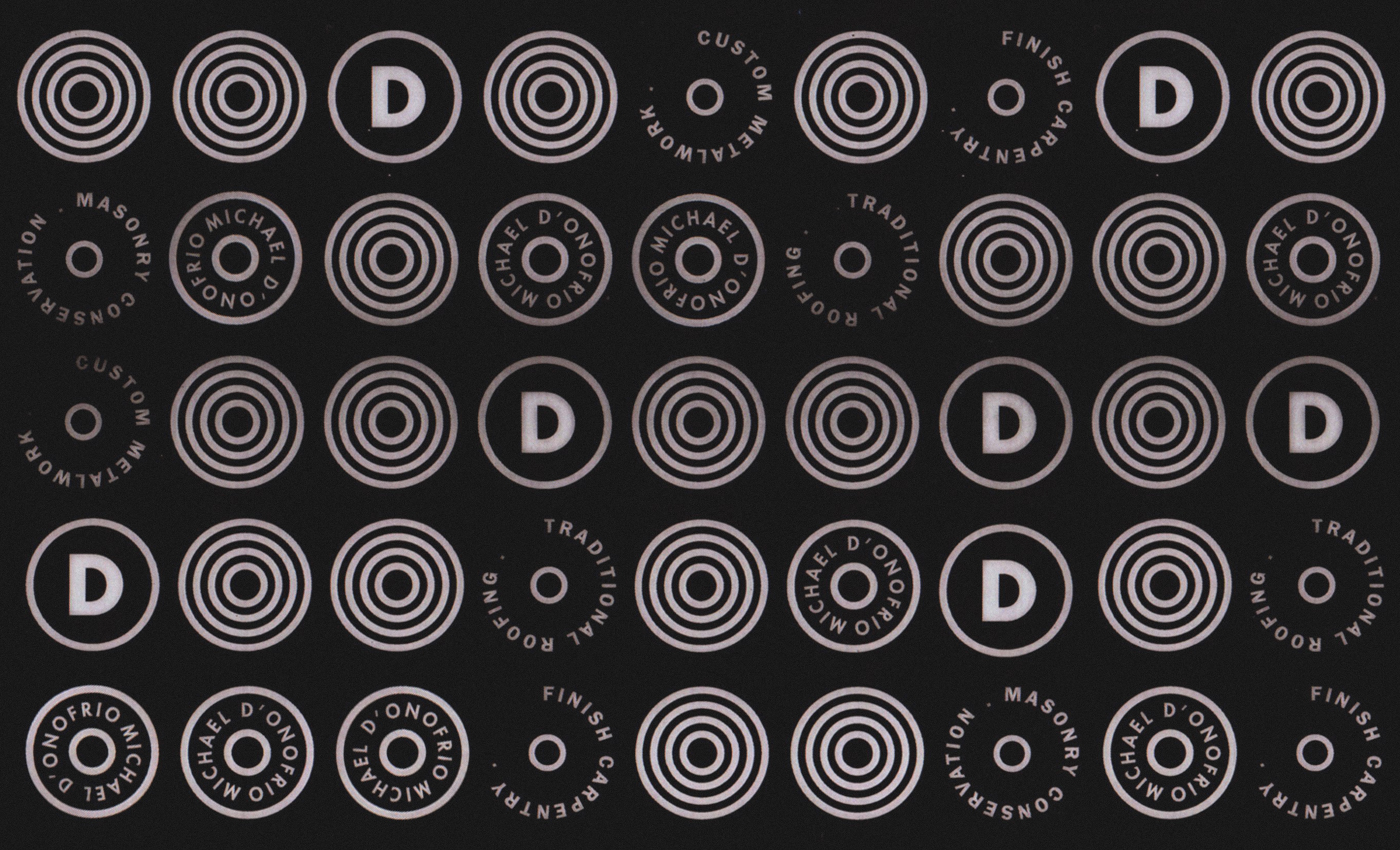Do you build additions?
In general, no – we’re tradesmen and mechanics, not developers or architects. Our niche is the restoration and conservation of historic materials and building systems. Additions, by definition, are new structures. That said, we sometimes offer exceptions if we really know a client, if the addition pertains to a historically designated property, or if the addition is innovative or novel. Unfortunately, our experience is that most additions cause more problems than they are worth for historic properties, especially since most artisans (and architects) today are not nearly as skilled or versatile as the ones in the past. We’re Luddites for a reason…
Do you charge for an initial visit or consultation?
No, unless the purpose of our visit is to prepare a report for a realtor or new homeowner. If there is emergency work, we may also charge for any resulting repairs – but this is more of a convenience; no one wants to wait for a second visit if water is pouring through the ceiling.
Why do you avoid Portland cement?
Because it is often too strong and inflexible for most historic masonry. In particular, all materials expand and contract (due to temperature and moisture differentials), and since most Portland cement joints are stronger than the surrounding stone, they will damage the stone – and not the other way around. Stone and brick are far more expensive to repair; joints, conversely, are sacrificial.
That said, 99% of masons use Portland cement mixtures, and an almost equal amount refuse to cut out the very joints that required attention (which is known as “riding-the-joints” – a lazy practice in which new joints are bonded onto loose joints – note: you can tell because the ridden joints, often pure white or grey, line up with or bulge out from the brick, since there is no space for the mortar). Such routine disregard for durability and aesthetics reflects the sad state of trade school education and apprenticeship in the US…
How is your approach to metalwork different?
We follow traditional standards. In particular, we’re probably the only boutique-contracting firm in the Philadelphia Main Line that actually reglet cuts copper or zinc-copper flashing into all of our chimneys. What is a reglet cut? A simple example will suffice: if you see an older chimney with green or black flashing that looks stepped like the section of a staircase, then it was probably reglet cut. The theory is that if the flashing were ever compromised, then the water could penetrate only one “step” of the flashing. So, any damage would be compartmentalized. Of course, this means that the stepped flashing would have to be properly cut into the masonry and then bent into a proper reglet cut via step and counter flashing. This is a time-consuming process that doubles the cost of a project. Unfortunately, most roofers underbid projects by wrapping diagonal bands of flashing, often cheap aluminum, around chimneys and then caulking (or even mucking) in the seams between the flashing and the masonry. This does nothing; in fact, any moisture that gets through will leak on a diagonal. The trade jargon (probably unfair because tradesmen working outside of Philadelphia do it just as much) for such a practice is known as “Philly flashing.”
Moral: your roof is only as good as its flashing, valleys, and moisture drainage system (gutters, downspouts, and drains) – all of which we take seriously. Whatever salesmen say, “lifetime” manufacturers’ warrantees only cover materials – and the most likely reason for failure is improper installation (which is a lawsuit between you and a fly-by-night roofer who can either go bankrupt or ignore you), not material failure (which is the responsibility of the manufacturer). But if you want to stay in continuous business, especially in a historic area with a variety of obscure building typologies, as we have for over 50 years, then you gotta do it right. The end result is more aesthetic, too.
Do you do interior work?
Of course, but we don’t advertise as such for privacy reasons: our clients don’t want pictures of their domestic interiors posted online.
Why do you think older building systems and materials are superior?
Not necessarily superior, but more durable. Think of centuries old religious institutions and governmental buildings with slate or tile roofs and then compare them to high-end McMansions with a twenty-year service life. The former were more robust. In this regard, lacking complete information, a useful heuristic is that the longer some technology (or even literary work) persists, the more likely it will be relevant or useful in the future. This is known as the Lindy Effect – it’s no guarantee that something will necessarily last forever, especially if climate change alters the very weather that historic buildings were traditionally designed to withstand, but it is a useful starting point.
What is the difference between conservation and restoration?
For most people, these two terms are interchangeable. But for us, the difference is about ethics. Restoration involves bringing something back to its original state, even if that state no longer exists. Conservation extends the life of a material / building system and otherwise halts or delays further deterioration or loss. As restoration contractors who specialize in the renovation of historic residential architecture, we have to constantly balance these two considerations. If we were to conserve everything, then we would be turning residential homes into museums or governmental monuments – just not practical. If we were to restore everything, then nothing would be unique. It’s a judgment call that depends on the type of fabric we need to preserve and the budget of the client.
Do you install new roofs?
Yes, but only if the previous roof is unserviceable or incompatible. For example, we often encounter historic homes with completely beat shingle roofs (rotted decking, pitted aluminum flashing, popped nails, brittle asphalt shingles, corroded vent collars, etc.). In those cases, preservation is not really an option, so we would recommend something more historically or aesthetically appropriate. If you just want a barbarian who bangs out shingles, favors aluminum, and caulks or mucks in leaks, then we are the wrong company.
Do you work outside the Philadelphia Main Line?
The Philadelphia Main Line, as well as Philadelphia, is our domain, but we are willing to venture much farther if the project is architecturally or historically intriguing.
What is your favorite book on historic preservation?
Without a doubt, we recommend Stewart Brand’s How Buildings Learn: What Happens After They’re Built.
Our favorite equivalent in fiction is Neal Stephenson’s The Diamond Age, which, although science fiction, is really about the iterative field of historic preservation. One quote, for example, equally applies to preservation technologists: “The distinction between [forgers and honers] was at least as old as the digital computer. Forgers created a new technology and then forged on to the next project, having explored only the outlines of its potential. Honers got less respect because they appeared to sit still technologically, playing around with systems that were no longer start, hacking them for all they were worth, getting them to do things the forgers had never envisioned.”
We’re honers.
What are your preferred projects?
Anything related to building diagnostics and traditional roofing. We take great pride in figuring out the exact causes of obscure or complex building pathologies in historic structures. This requires considerable experience with pre-modern and modern American building systems and materials, a deductive mindset, and patient detective work.
Can you match the brick or slate or stone on my building?
In most cases, if the above can’t be conserved, we can find exact replacements. If we can’t find exact replacements, we can fabricate or quarry or suggest suitable alternatives.
Can you match my historic windows?
Historic windows are truly unique, and, as such, we won’t replace them. We will, however, repair, weather strip, or insulate them. If such windows had been removed in the past, we can find aesthetic or historically appropriate alternatives.
Do you accept insurance work?
No, unless we do it as a favor for a longstanding client or if you have an exact replacement policy. Regardless, climate change and storm damage has forced insurers to reject or litigate most minor claims, so you will most likely end up increasing your premiums. Our replacement standards are also much higher.
Do you provide handyman services?
We’re a little too skilled for simple household tasks, but we do offer concierge home renovation services for longstanding clients or Main Line estates.
Can you finish before sundown on Fridays?
Yes, we will remove or cover up all materials before such a time.
What is your availability?
No time is inconvenient to contact us. Except when we travel to Brittany, France, during the hottest months of the summer, we are always available, even during weekends, holidays, extreme weather events, and the liminal hours between dusk and dawn. Roofing leaks and other issues don’t exactly follow the standard workday.
What’s with the raccoon?
The MDHR logomark was inspired by a family of mummified raccoon skeletons that we had extracted from the domed temple roof of a picturesque landscape folly. Of these, one, whose body had stiffened through the entropic process of prolonged decomposition, had such an irreverent and lifelike gaze that we immortalized its spirit in a site picture as the "Raccoon Mummy": a playful, resourceful, and protective trickster figure that tragically entombs itself within the very historic architecture that MDHR renovates. Our avatar honors this spirit. If you are really curious, proceed to the projects page.
Which preservation organizations do you recommend?
The Association for Preservation Technology Delaware Valley Chapter (APT-DVC), the National Trust for Historic Preservation, the American Institute for Conservation (AIC), the National Slate Association, the International Council on Monuments and Sites (ICOMOS), the Society of Architectural Historians (SAH), Docomomo US, the Frank Lloyd Wright Building Conservancy, the Vernacular Architecture Forum, the Buckminster Fuller Institute, the Athenaeum of Philadelphia, the Philadelphia Architects and Buildings Project (PAB), Hidden City Philadelphia, the James Rose Center, the Preservation Alliance for Greater Philadelphia, the Wharton Esherick Museum, Moravian Pottery and Tile Works (including the Mercer Museum and Fonthill), the Nakashima Foundation for Peace, the Friends of the Wissahickon, the Shofuso Japanese Cultural Center, the Long Now Foundation, the Society for Industrial Archeology (SIA), the Isamu Noguchi Foundation and Garden Museum, and many more.
How can we support Ukraine?
You are not alone. A simple and effective act is to show your solidarity via a yard sign, flag, patch, shirt, hat, or vehicle sticker. Alternatively, please consider the following humanitarian / medical / legal assistance links:
Doctors Without Borders / Médecins Sans Frontières: www.msf.org
Hebrew Immigrant Aid Society (HIAS): www.hias.org
United Ukrainian American Relief Committee: www.uuarc.org
Ukrainian Red Cross: redcross.org.ua/en/
UNICEF (UN Children’s Fund): www.unicef.org
UNHCR (UN Refugee Agency): www.unhcr.org


